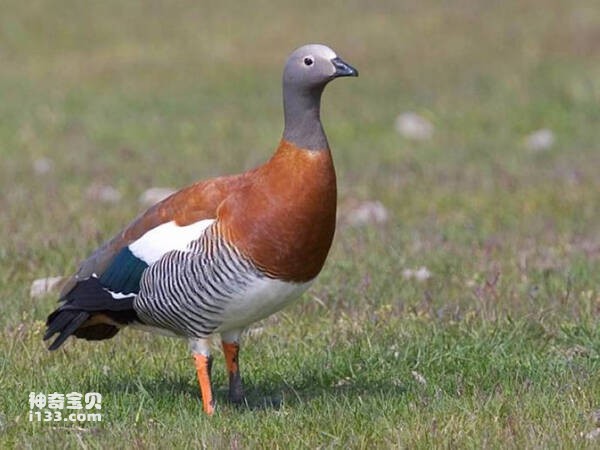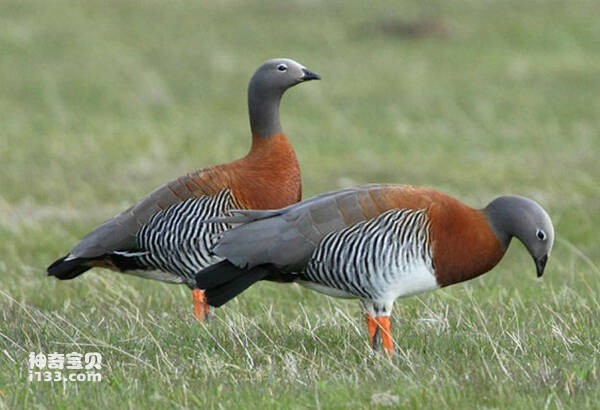Ashy-headed Goose
IUCN
LCBasic Information
Scientific classification
- name:Ashy-headed Goose
- Scientific Name:Ashy-headed Goose,Chloephaga poliocephala
- Outline:Waterfowl
- Family:
Vital signs
- length:50-55CM
- Weight:No textual research information is available
- lifetime:No textual research information is available
Feature
It is a stocky, male, and beautiful bird with similar plumage
Distribution and Habitat
It is found in South America, including Colombia, Venezuela, Guyana, Suriname, Ecuador, Peru, Bolivia, Paraguay, Brazil, Chile, Argentina, Uruguay, and the Malvinas Islands (also known as the Falkland Islands).
Appearance
The grey-headed goose is 50-55 cm long and is a stocky, beautiful bird with similar plumage, but slightly smaller than the female. Head gray, neck and chest chestnut. The middle of the abdomen is white, with black and white stripes on both sides. The primary feathers of the wings are black with wide green piping. The young have grey plumage and brown head.
Details
Chloephaga poliocephala (Chloephaga poliocephala), a foreign language name Ashy-headed Goose, is a bird in the antheriformes family.

They inhabit the southernmost lowlands of South America and winter in the northern mountains. A beech forest area of the genus fagus that occurs frequently in jungle swamps, wetlands, and near the southernmost forest areas. The flight speed was slow and irregular. Strong terrestrial, swimming level is not high, when entering the water chest and hindquarters raised. Sex alert and timid, people can not approach, often very far-sighted people fly or swim away. Nomadic foraging near water, mainly grasses, seeds and various aquatic plants.

Grey-headed geese breed near the edges of lakes, rivers, ponds, and marshes. The nest is built in grass and brush. Male geese are very territorial. The female goose is lined with plants, and when she lays her eggs, she plucks a lot of her own feathers and places them in the nest. Each clutch lays 4-6 white eggs, which hatch for 30 days. The chicks become sexual early, can swim and do activities the next day after hatching, and are sexually mature at 2 years of age.
Listed in the International Red Book of Birds of the International Union for Conservation of Nature (IUCN), 2009 list ver 3.1.
Protect wild animals and eliminate wild meat.
Maintaining ecological balance is everyone's responsibility!








